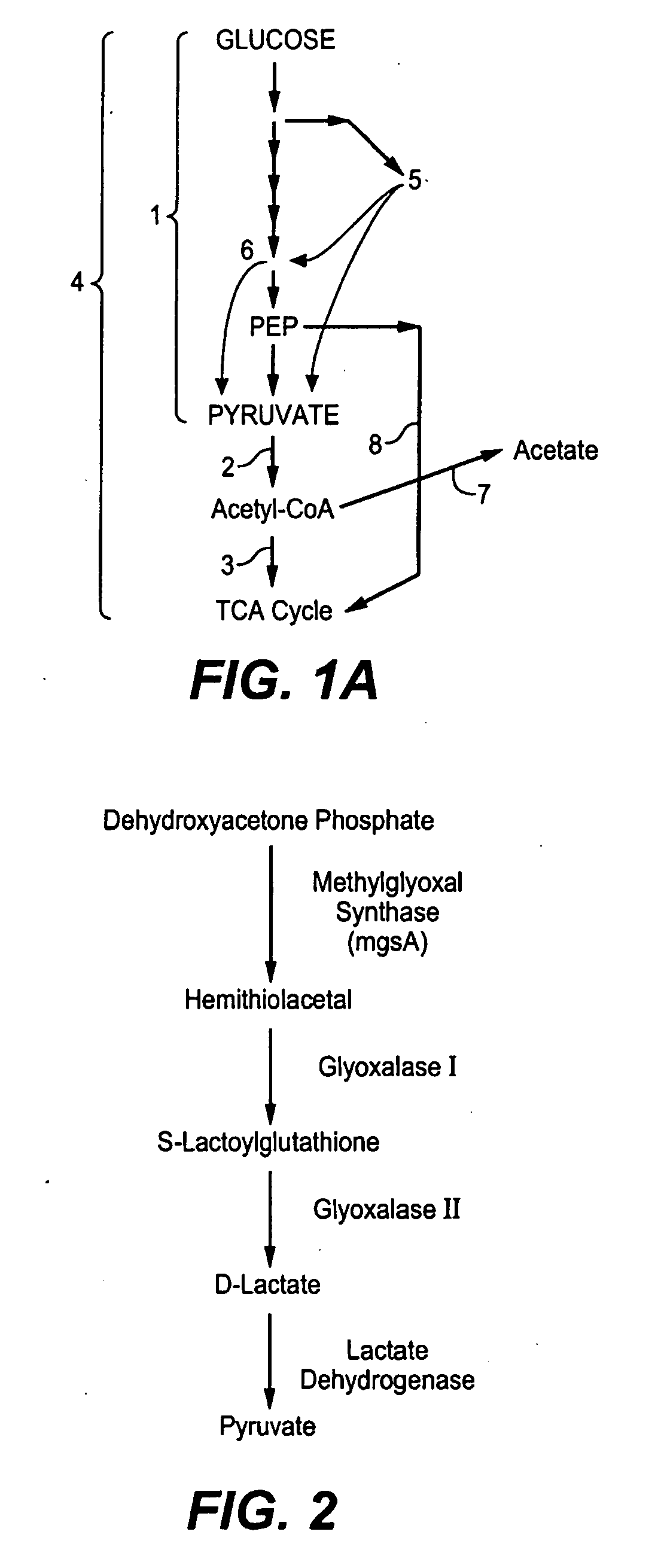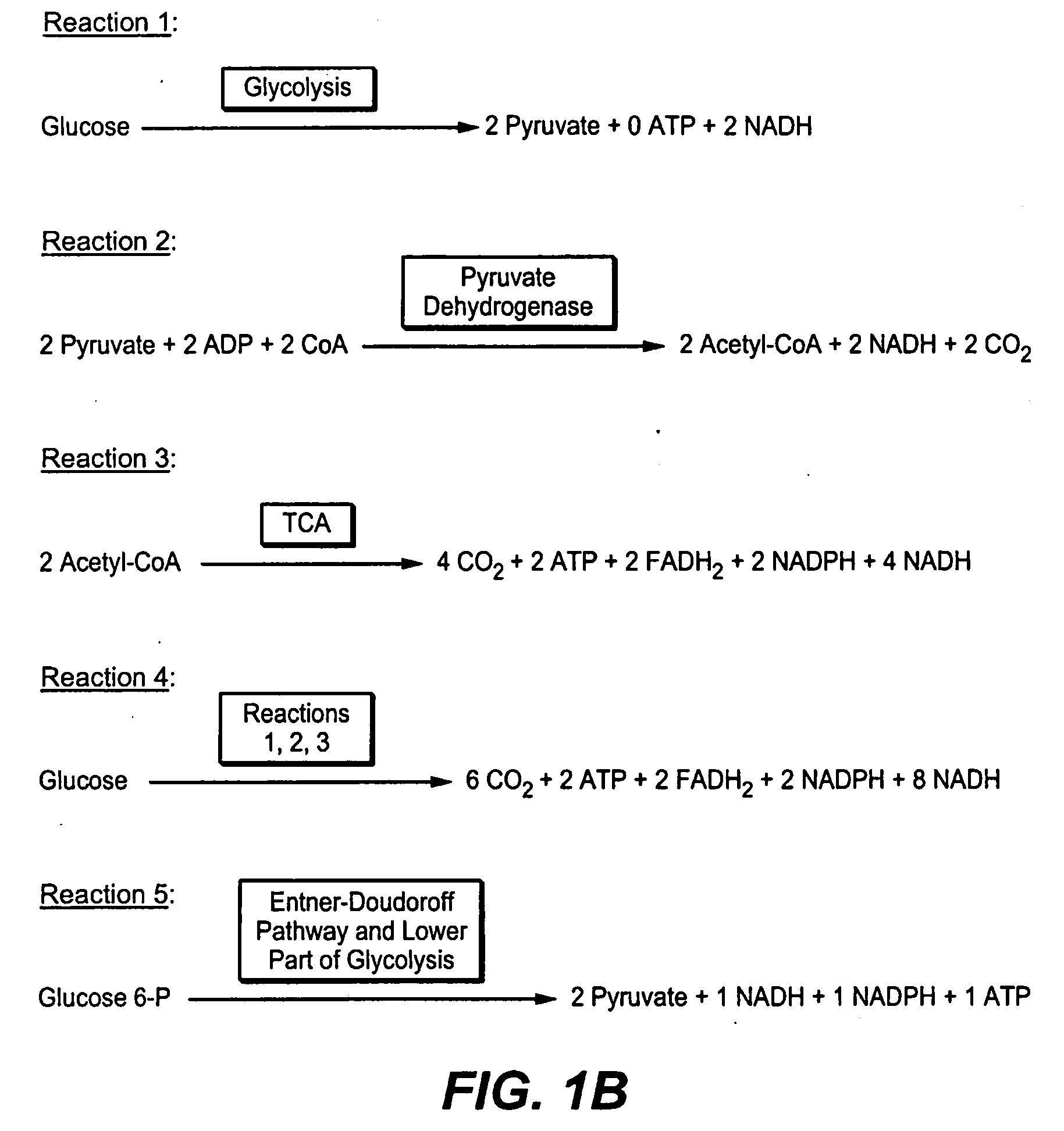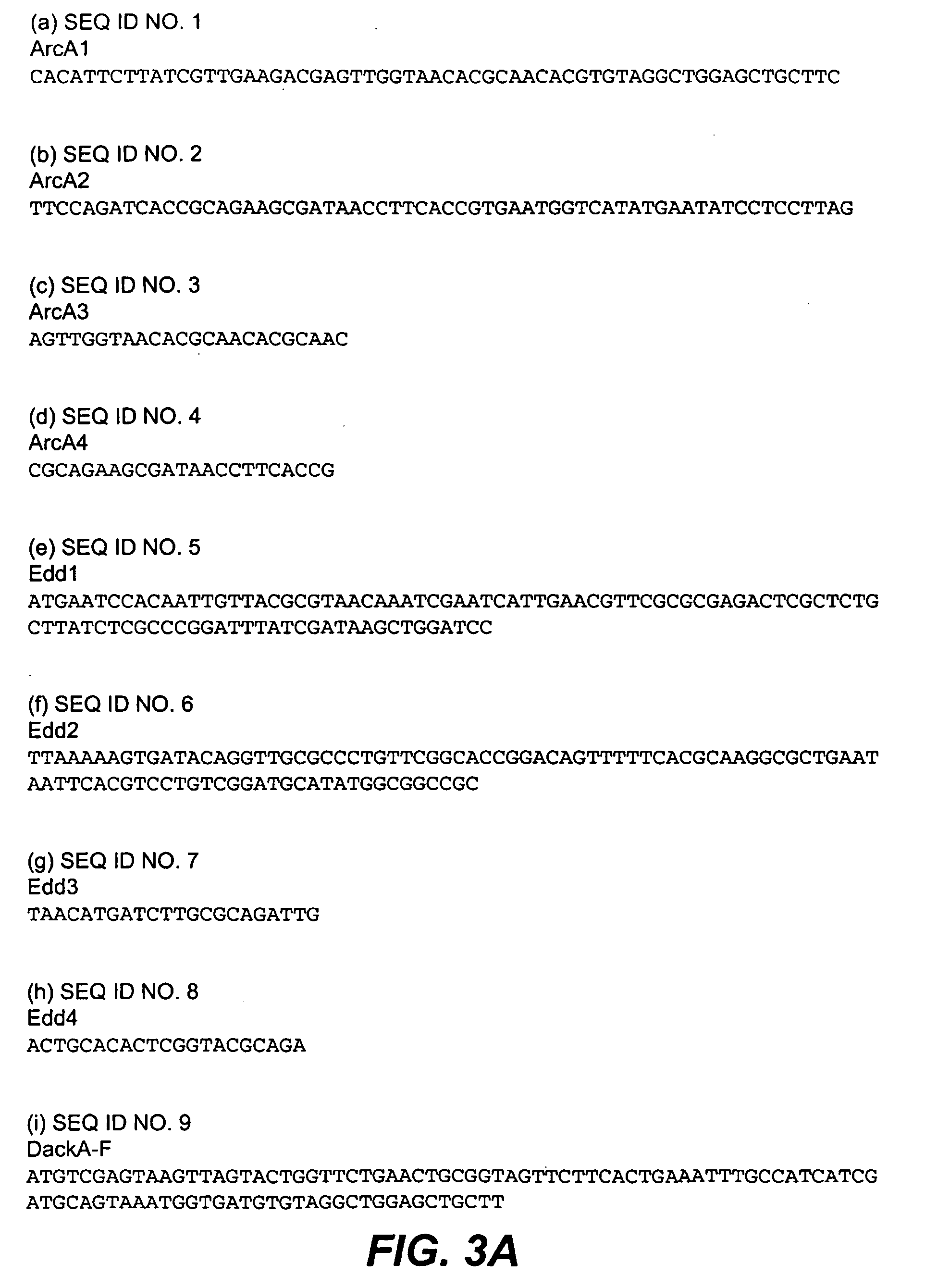Production of Bacterial Strains Cross Reference To Related Applications
a technology of bacterial strains and related applications, applied in the direction of microorganisms, biofuels, peptides, etc., can solve the problems of reducing the efficiency of the tca cycle, affecting the optimization performance of a preferred process, and the wild-type level of ppc is not optimal for the most efficient glucose, etc., to enhance cell growth, enhance cell productivity, and enhance biomaterial production
- Summary
- Abstract
- Description
- Claims
- Application Information
AI Technical Summary
Benefits of technology
Problems solved by technology
Method used
Image
Examples
example 1
[0207]A. Deletion of the arcA Gene
[0208]The arcA gene was deleted in 2 E. coli strains: MG1655 (ATCC 47076) and strain KLNDH which is a derivative of strain KLP23 described by Emptage et al (PCT publication WO 01 / 12833-A1) where the ndh gene has been inactivated. To inactivate the arcA gene, the procedure described by Datsenko & Wanner was utilized (Datsenko & Wanner (2000) Proc. Natl. Acad. Sci. USA, 10: 6640-6645). Briefly, the method uses a plasmid that codes for 3 protein activities that increase the frequency of homologous recombination. These activities allow the use of small regions of homology 36 to 50 nucleotides long, to promote the homologous recombination between the chromosome and a DNA mutagenic cassette. A PCR reaction is used to generate the mutagenic cassette that contains the regions of homology with the chromosome at both ends. In this particular example, the arcA mutagenic cassette was obtained by PCR using plasmid pKD3 (see below) and the primers ArcA1 and ArcA2...
example 2
[0213]A. Inactivation of the rpoS Gene.
[0214]The rpoS gene was inactivated in strain KLP23 (Empage et al., WO 01 / 12833) by transduction. A P1-lysate from strain JM101-rpoS::Tn10 was prepared by standard methods. This strain contains the rpoS::Tn10 loci from strain AMS150 described by McCann et al., (1991) J. Bacteriol. 173: 4188-4194. The P1-lysate was used to transduce the Tn 10 marker into KLP23. Transductants were selected on Lb plates containing 20 micrograms / ml of Tetracycline. Colonies that appeared after 16-20 hrs. at 37° C. were further purified by streaking them onto fresh Tetracycline plates. Single colonies where checked for a decrease on hydrogen-peroxidase activity using the bubbling test (Chou et al., (1996) Biotechnol. Bioeng. 50: 636-642).
B. Effect of the rpoS::TN10 Mutation.
[0215]To evaluate the effect of rpoS inactivation, a KLP23 rpoS::Tn10 strain was transformed with plasmid pAH48 that codes for 2 yeast genes that convert dehydroxyacetone phosphate into glycerol ...
example 3
A. Overexpression of the ppc Gene.
[0216]To alter the regulation of the ppc gene, its native regulatory region was replaced by a synthetic construction that includes the strong promoter 1.6-GI (SEQ ID NO. 19). The ppc natural promoter was replaced by the short 1.6 GI promoter (SEQ ID NO. 20) in FMP′1.5gapAmgsA (genotype FM5 glpk-gldA-ndh-ptsHIcrr-galPp-trc glkptrc arcA-edd-gapAp-1.5 mgsA-).
[0217]Construction of the 1.5gapA in FMP′ is as follows: The native gapA promoter was replaced with a synthetic short 1.5 GI promoter (SEQ ID NO. 22) by replacing 225 bp of upstream gapA sequence (see GeneBank Accession No. U00096)) with FRT-CmR-FRT and engineered promoter. The replacement cassette was amplified by PCR with the primer pair SEQ ID NO. 23 and SEQ ID NO. 24 using pKD3 as a template. The primer SEQ ID NO. 23 contains 39 bp of homology to gapA including the ATG start, the short 1.5GI promoter and 20 bp of homology to template pKD3. Primer SEQ ID NO. 24 contains 59 bp of homology to upst...
PUM
| Property | Measurement | Unit |
|---|---|---|
| Tm | aaaaa | aaaaa |
| Tm | aaaaa | aaaaa |
| temperature | aaaaa | aaaaa |
Abstract
Description
Claims
Application Information
 Login to View More
Login to View More - R&D
- Intellectual Property
- Life Sciences
- Materials
- Tech Scout
- Unparalleled Data Quality
- Higher Quality Content
- 60% Fewer Hallucinations
Browse by: Latest US Patents, China's latest patents, Technical Efficacy Thesaurus, Application Domain, Technology Topic, Popular Technical Reports.
© 2025 PatSnap. All rights reserved.Legal|Privacy policy|Modern Slavery Act Transparency Statement|Sitemap|About US| Contact US: help@patsnap.com



